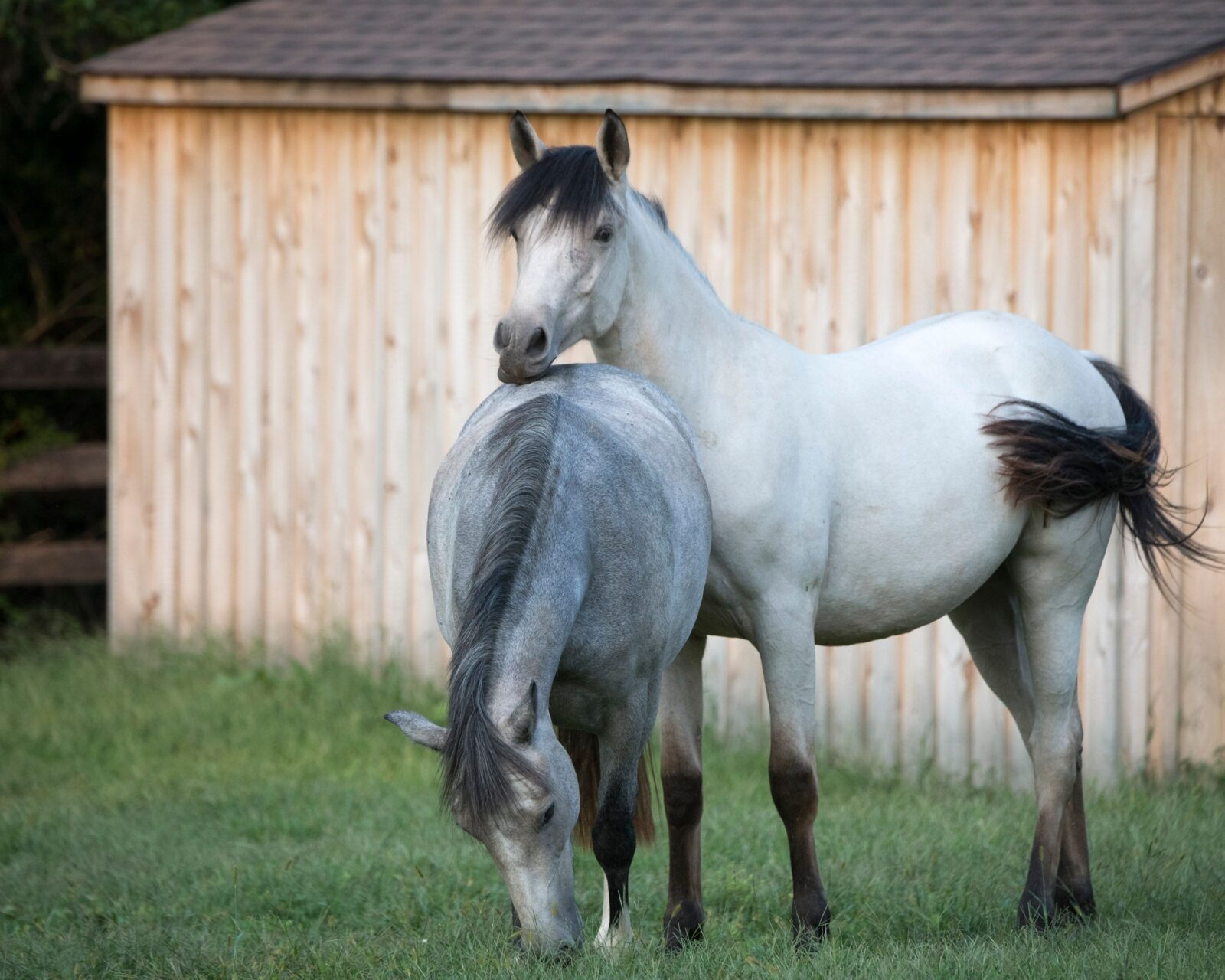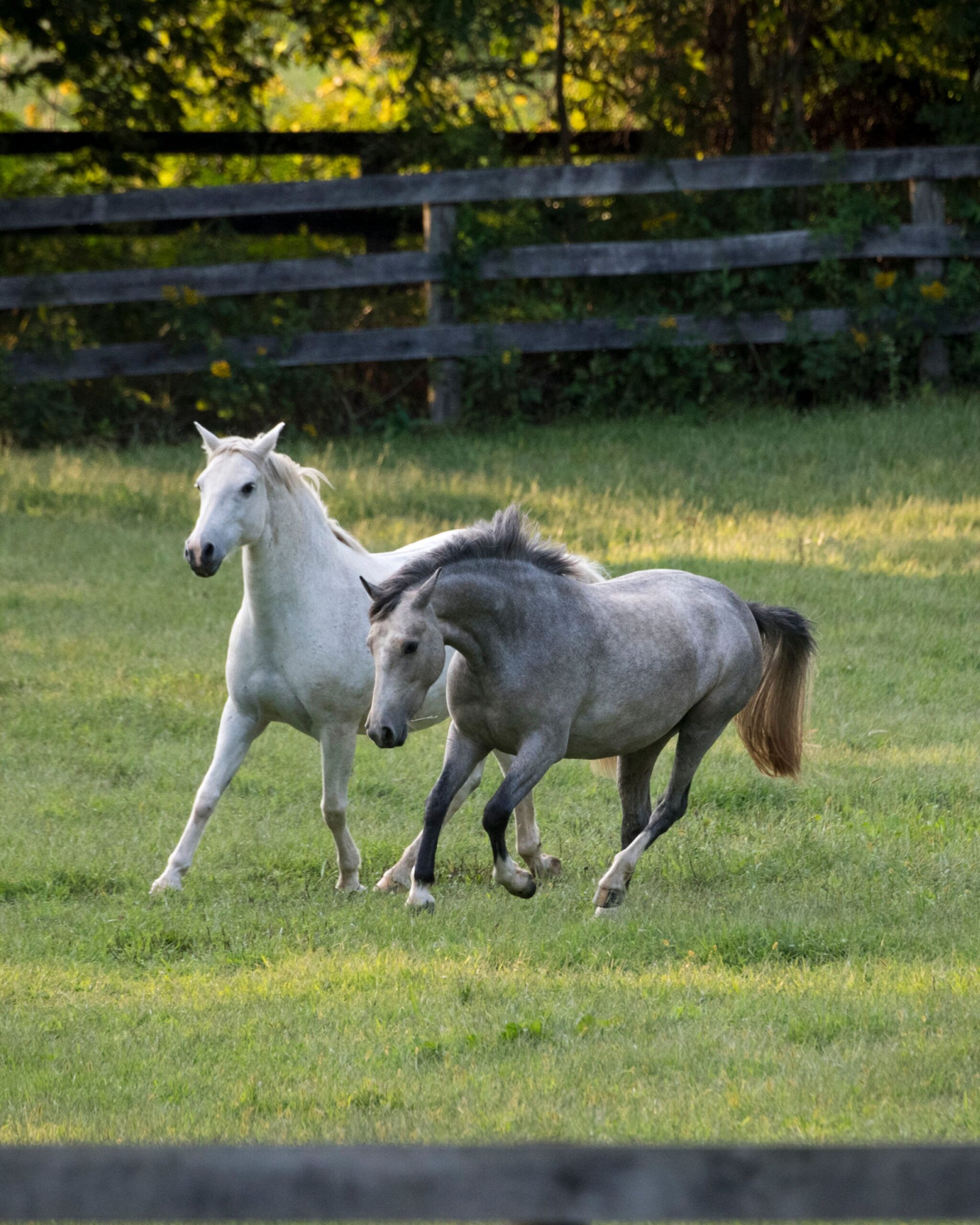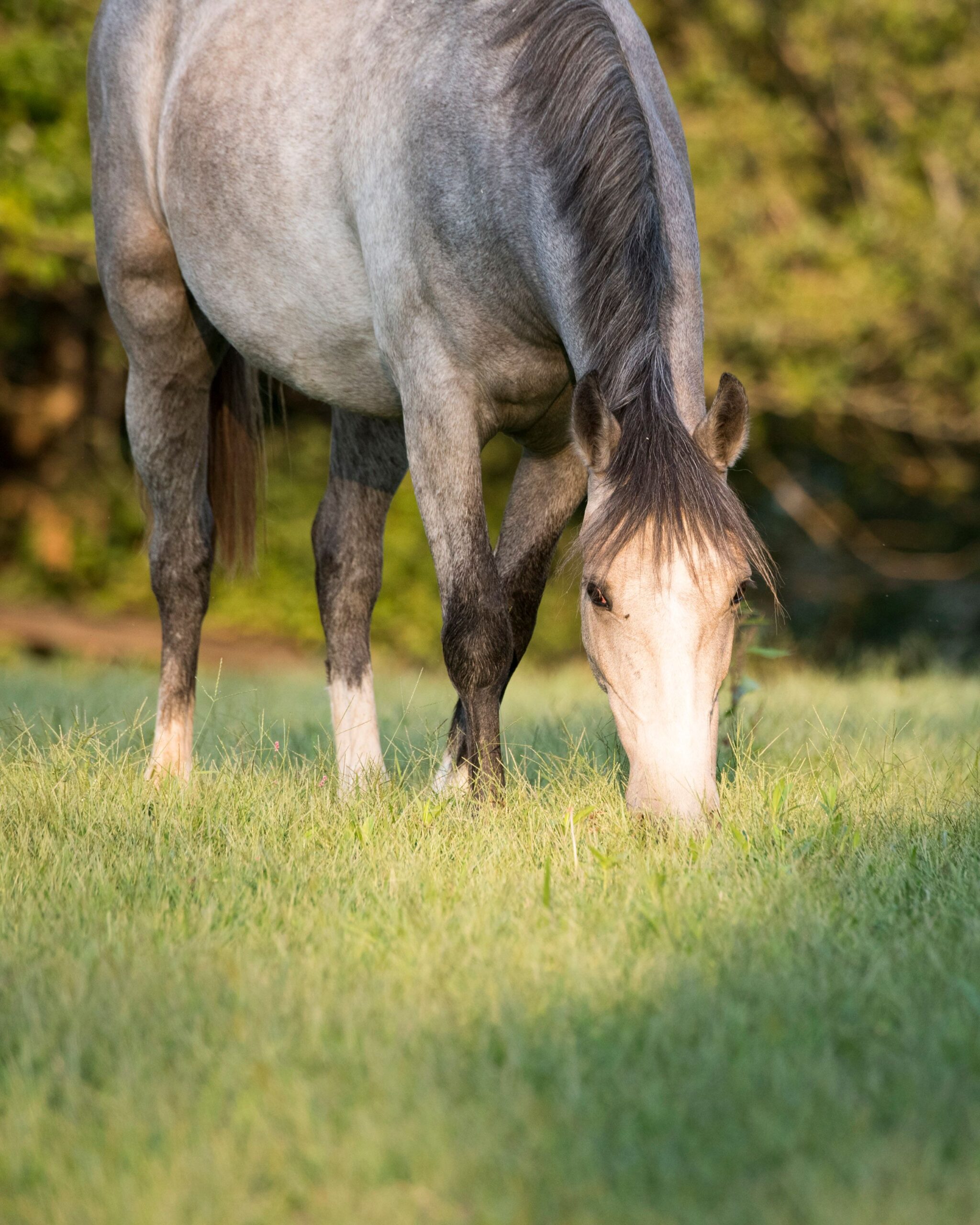Greener Pastures: Equine Care with an Eye to the Environment

Greener Pastures: Equine Care with an Eye to the Environment
Written by Diane Helentjaris
Photos by Joanne Maisano
Few sights are as peaceful as a band of horses grazing in a pasture. Tails swish, heads are down. The Blue Ridge Mountains rise behind them. A line of trees marks a creek’s path as it meanders through the field. All looks to be in harmony.
Today’s horse owners can tap into new knowledge and tools to preserve this precious sight and keep in sync with the environment. Any horse owner — whether they have a stable or one pet horse on a farmette — can make a difference. Here are a few ideas to benefit the health of both horses and their habitat:

PROPERLY MAINTAINING GRASSLAND
Well-maintained grassland makes a positive impact on both equine nutrition and local ecology. Rotational grazing,unlike continuous grazing, gives grassland recovery time. It helps maintain a full, protective, and high-quality covering of grass. In this technique, a pasture is subdivided into several small areas. Horses graze on one section but are moved along to another section before they nibble the grass all the way down. Typically, they move every few days or so. Horses are kept off the grazed land until the grass regrows. A Rutgers University study found the practice to be cost neutral and especially beneficial to horses with certain metabolic conditions. The Middelburg Agricultural Research and Extension Center (MARE) is a 420-acre property donated by Paul Mellon to Virginia Tech in 1949. Researchers at MARE have created an eight-acre model rotational grazing system to study its benefits.
Avoiding horse crowding also takes stress off grassland. Matching the number of horses to the available amount of land promotes equine and environmental health. Too many horses will increase the risk of overgrazing, compacting the soil, and creating bare areas. Trees or portable shelters can help keep horses dispersed across a pasture. Horses prefer tree shade which is cooler than shade under a man-made shelter thanks to the evaporation of water from the tree’s leaves. Inadequate opportunities for finding shelter will lead to crowding which can damage pastures. In lieu of trees, man-made shelters offer the advantage of being portable so horses can be encouraged to move about in a pasture.
Mowing lops off weed seed heads before they can germinate but it also destroys native plants that are beneficial for the environment. Small acreages can be hand weeded. However, some resources recommend bringing in non-equine grazing animals – goats, llamas, sheep – from time to time to efficiently pick off weeds in larger areas such as pastures.
Finally, another important step to help make sure grasslands are as healthy as possible is to schedule regular soil testing and proactively correct any imbalances.
PRESERVING WATER QUALITY
Controlling the runoff from farms decreases erosion, protects grassland, and preserves water quality. Thoughtful siting of wash stalls can minimize runoff. Planting grasses near their drainage areas can also slow and buffer water movement.
Riparian buffers, strips of vegetation lining waterways, are helpful tools for decreasing the pollution levels of surface water. They filter pollutants and sediment, decrease erosion, shade waterways, and provide habitats for wildlife. They also support biodiversity and native plants. The protective power of riparian buffers ripples all the way down from Virginia horse country to the Chesapeake Bay. Keeping horses out of streams and creeks is another straightforward practice to keep surface water clean.

MINIMIZING MUD
Minimizing mud protects horses (and humans) while preserving grassland. Mud carries risk — slips, falls, hoof infections, and more. Muddy areas dry into bare, compacted soil, and promote runoff.
High traffic areas are prone to becoming mud pits. As herd animals, horses tend to hang out together in groups at the water trough, gates, and feeding areas. As domestic animals, they hang out at gates and wait for their humans. Constructing gates, troughs, stables, and paddocks in well-drained areas will decrease mud-related problems.
For those unavoidable high-traffic areas, all-weather synthetic pads can be put down. For a more permanent solution, these areas can be dug out and refilled with a combination of geotextiles, gravel, and sand. Geotextiles, common in highway construction, are fabrics which can be buried in the ground to stabilize soil. For wash pads, using pervious concrete as a base allows wash water to filter down into the underlying soil.
MANAGING MANURE
Horses have their habits and one is to create manure piles. These moist areas provide a breeding ground for flies, other insects, and weeds. They can also allow equine worms and parasites to flourish. Horses avoid grazing near these areas which, in turn, may lead to overgrazing other sections of a field. Solutions include dragging fields to disperse and dry out manure which makes it less hospitable for pesky bugs. Manure can also be collected, composted, then reused as fertilizer.
RECYCLING IN THE BARN
Any horse owner knows that horses require a lot of products — everything from shampoo to deworming medication. Proper disposal of plastic packaging and empty containers is more likely if refuse and recycling containers are kept handy in the barn.
Horses are a treasured part of life in our area. They are also important players in creating a sustainable, healthy environment. ML
Additional information about the Middleburg Agricultural Research and Extension Center is available at arec.vaes.vt.edu/arec/middleburg.html. The center is located at 5527 Sullivan’s Mill Road, Middleburg, Virginia. Their telephone number is (540) 687-3521.
This article first appeared in the April 2022 Issue.


